Menu
Physics Lesson 16.4.1 - Magnetic Force on Moving Charges
Please provide a rating, it takes seconds and helps us to keep this resource free for all to use
Welcome to our Physics lesson on Magnetic Force on Moving Charges, this is the first lesson of our suite of physics lessons covering the topic of Magnetic Force on a Wire Moving Inside a Magnetic Field. Lorentz Force, you can find links to the other lessons within this tutorial and access additional physics learning resources below this lesson.
Magnetic Force on Moving Charges
It is a known fact that current is a result of charges moving in a given direction. Stationary free charges do not produce any current, neither can the charges moving in random directions do. Therefore, if we want to deal with electric current, we will also take into account the magnetic effect it causes, and therefore the magnetic force produced.
In addition, since forces cause motion, it is expected the charges move even when they are not flowing through a conducting wire; the only condition for this, is the charges to be in one directional regular motion. However, in most cases we refer to electric charges moving through a conducting wire as this is the easiest method to obtain regular motion of charges.
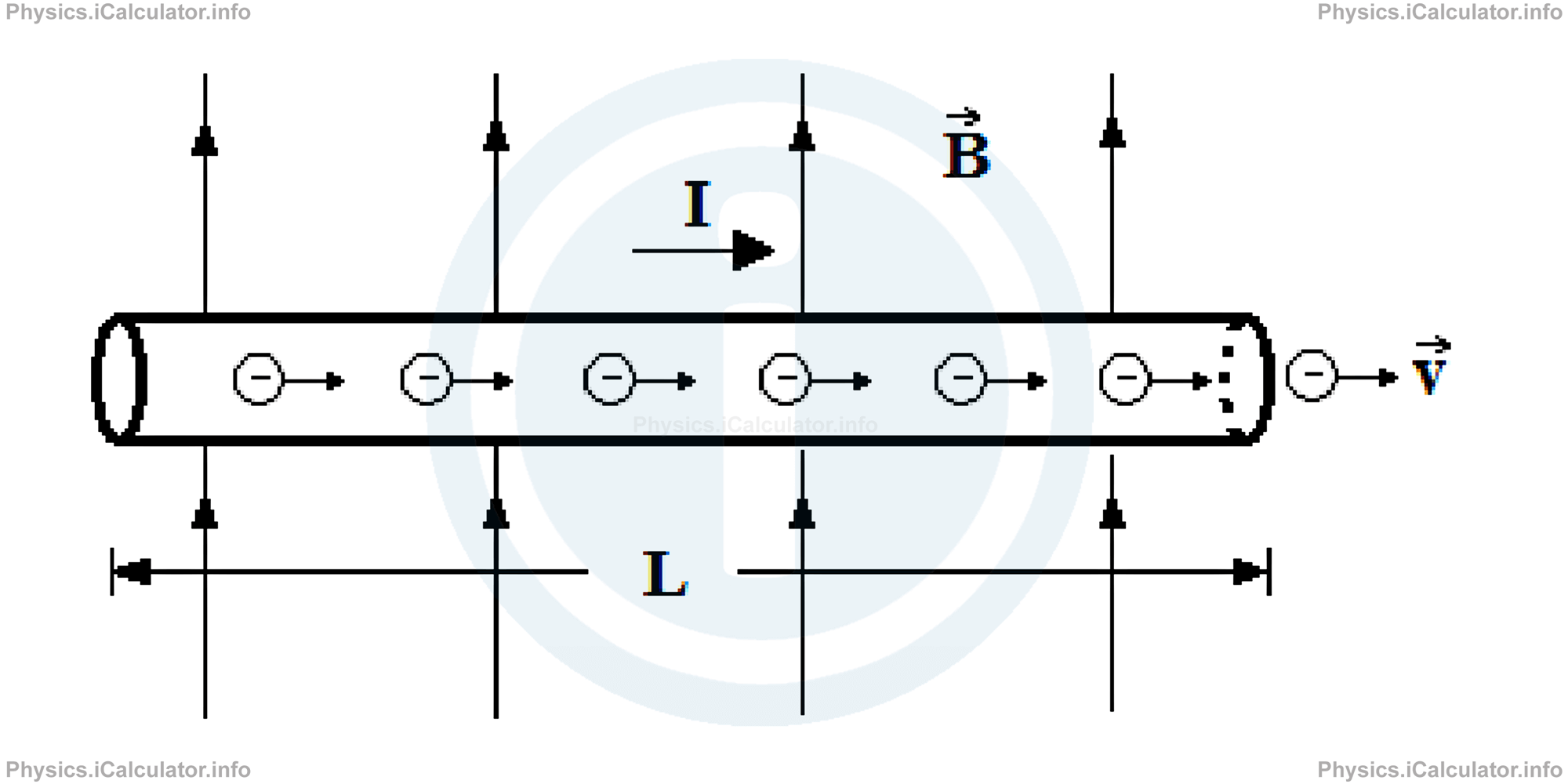
The magnetic force F1 acting on each charge due to their directed motion in the conducting wire is calculated by dividing the total magnetic force Ftot by the number of charges n flowing in the entire length L of the wire. Mathematically, we have:
Since the above magnetic force is the same magnetic force we have discussed in the previous tutorial (Ampere's Force), we can write
Giving that the current I is
where ΔQ is the charge flowing through the wire in the time interval Δt and
where v is the velocity of moving charges throughout the wire, we obtain
= ∆Q ∙ B ∙ v/n
In addition, the total charge flowing through the wire during the interval Δt is a multiple of elementary charge e (i.e. ΔQ = n ∙ e) we obtain
= e ∙ B ∙ v
The vector form of the above equation is
Remark! The symbol e used above is not intended for electrons but for elementary charges despite in general there are the electrons the changes that can move.
We have always taken the direction of current from positive to negative. Therefore, to find the direction of magnetic force acting on a moving elementary charge we must assume it as positive, although we know that only negative charges (electrons) are able to move through a conductor (positive charges can move only inside an electrolyte). Since the above formula derives from that of Ampere's Force, the magnetic force on positive charges is found by using the Fleming's left hand rule. According to this rule the four fingers lie in the direction of motion of the positive charges, the palm is punched by magnetic field lines and the thumb shows the moving direction caused on the wire due to this interaction. But if the type of charge changes (i.e. if we consider a negative charge instead of a positive one), the direction of force will change as well. For example, the wire in the figure shown earlier moves in the onto-the-page direction. This is illustrated in the figure below.
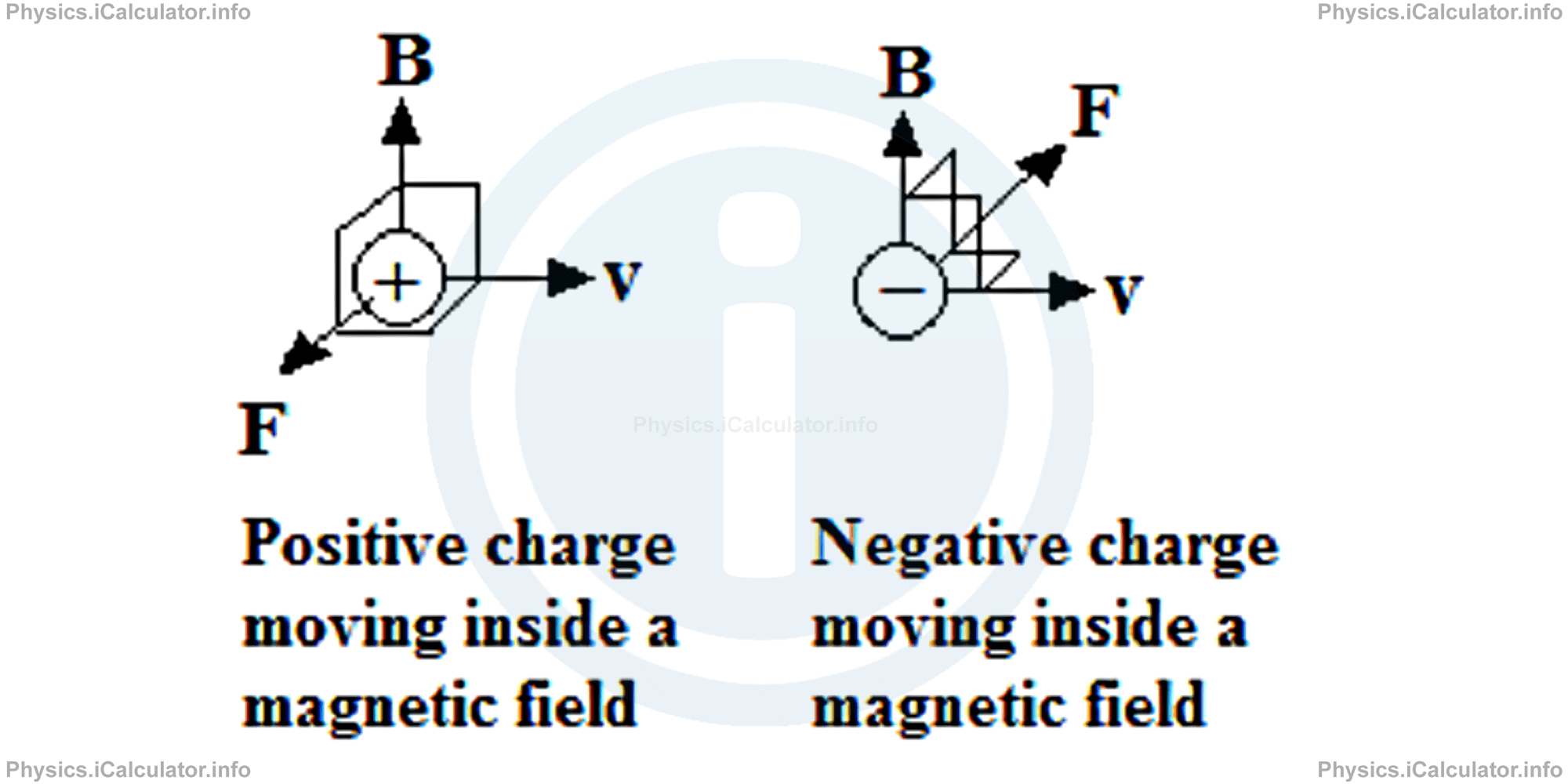
Not always the direction of particles motion is perpendicular to the magnetic field lines. When these two vectors form another angle θ to each other, we have to consider this angle as well. The formula of magnetic force for an elementary electric charge in such conditions therefore becomes
However, the force vector will still be perpendicular to the plane of the other two vectors (v and B).
Example 1
An electron is moving at 200 m/s at 300 to the direction of a 6mT magnetic field lines as shown in the figure.
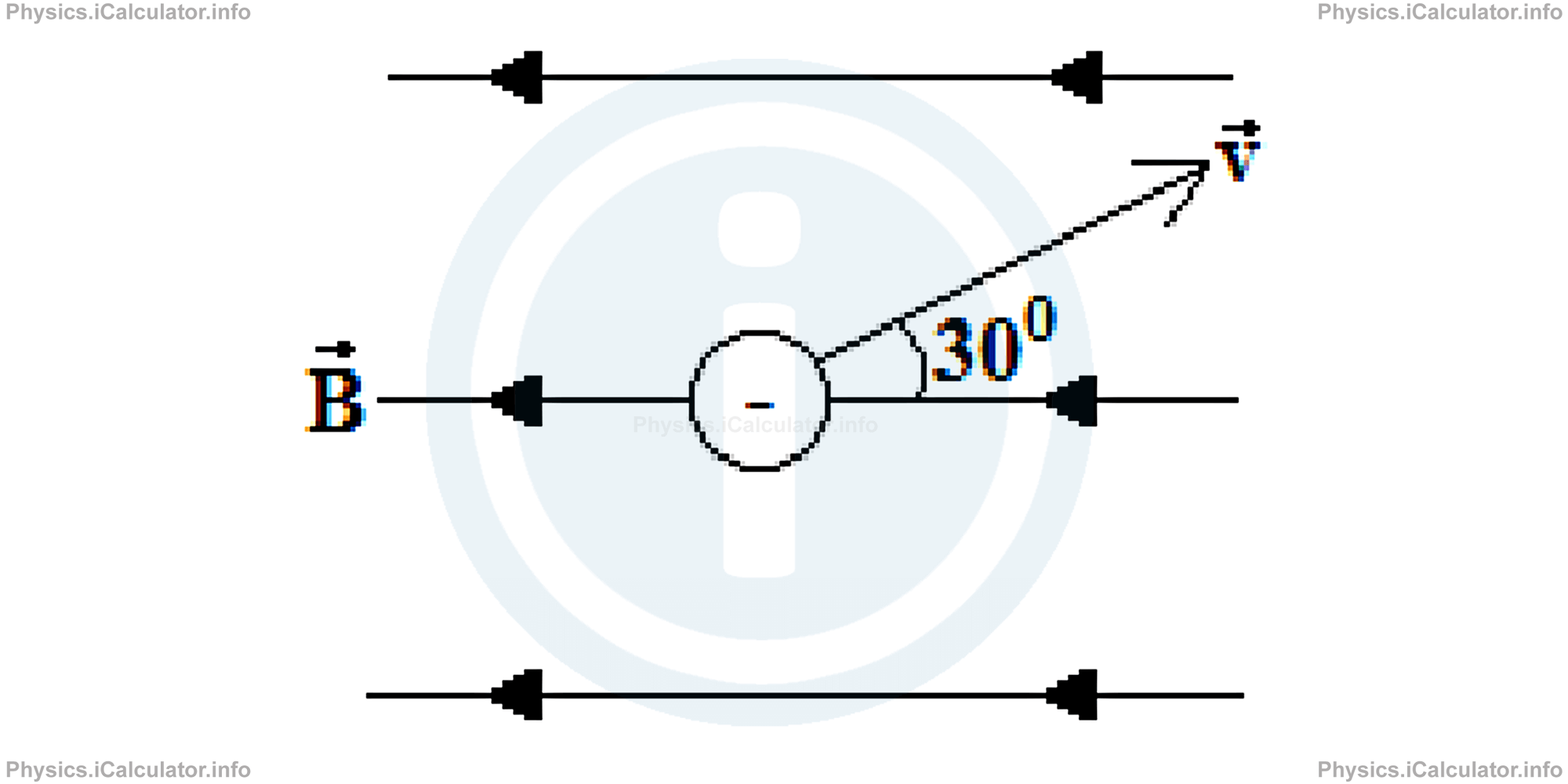
Take the magnitude of elementary charge equal to 1.6 × 10-19 C.
Solution 1
- Using the scalar equation for the force acting on an elementary charge when moving inside a magnetic field F1 = e ∙ v ∙ B ∙ sinθwe obtain after substitutionsF1 = (1.6 × 10-19 C) ∙ (2 × 102 m/s) ∙ (6 × 10-3 T) ∙ sinθ
= 1.92 × 10-19 N - The direction of magnetic force is found by using the Fleming's Left Hand Rule for a positive charge and then taking the opposite direction of it. We have to consider the vertical component of velocity for orientation. Here the direction of velocity replaces the direction of electric current in Ampere's Force (this is obvious since current represents a movement of electric charges). Thus, the four fingers are directed downwards while the palm is directed due right as it is punched by magnetic field lines which come from right to left. As a result, if the charge was proton, it would move in the out-of-page direction but it is electron instead, so it will move in the onto-the-page direction.
We can use the same approach for larger charged objects as well. In this case, we apply the vector equation
or its scalar equivalent
to calculate the magnetic force of a charged object in motion. This force is the same force we have called earlier as "the Ampere's force". This is because
= Q ∙ v ∙ B ∙ sinθ
Let's consider another example in this regard.
Example 2
A 20 cm long current carrying wire, which is able to carry 4A of current in 10 seconds is placed between the poles of a U-shaped (horseshoe) magnet as shown in the figure.
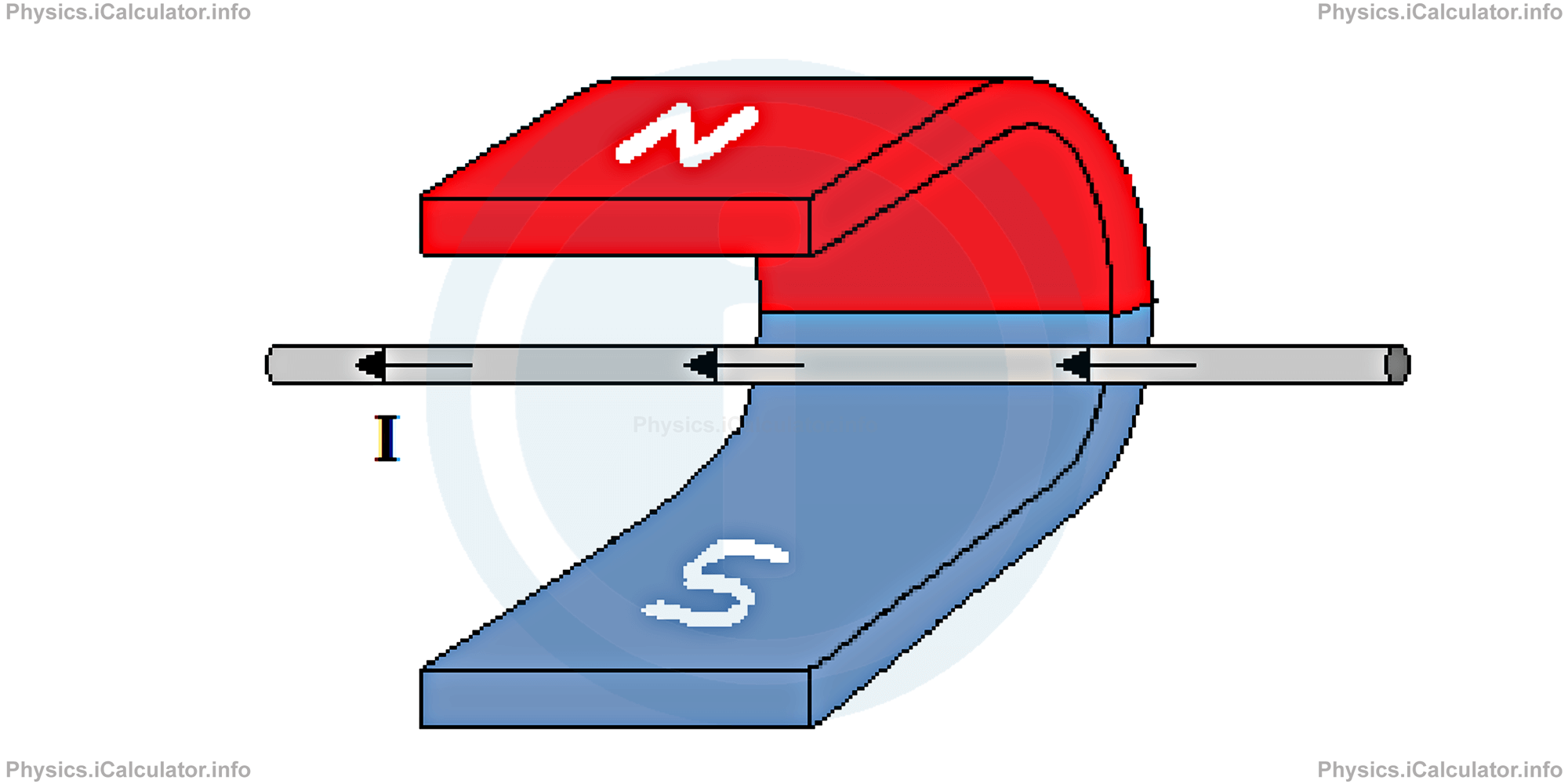
If the magnetic field produced by the magnet is 50 mT, calculate:
- Magnetic force produced on the wire
- Direction of magnetic force
- Moving velocity and direction of the wire if its weight is negligible
Solution 2
Clues:
L = 20 cm = 0.2 m
I = 4 A
t = 10 s
B = 50 mT = 0.05 T
- We can find the magnetic force using the equivalence between the Ampere's Force and the magnetic force of charges in motion. Given that the magnetic field lines lie from North to South pole of magnet (i.e. vertically down), the angle θ is 900 (that is sin θ = 1). Thus, we obtain for the magnitude of magnetic force on the wire: F = I ∙ B ∙ L ∙ sinθ
= (4A) ∙ (0.05T) ∙ (0.2m) ∙ 1
= 0.04 N - The direction of magnetic force is found by applying the Fleming's Left Hand Rule. The palm is placed face up as the magnetic field lines lie from up to down (they must punch the palm). The four fingers are directed due left as current flows from right to left. As a result, the magnetic force (shown by the thumb) is directed outwards (out of page). The figure below gives a clearer idea on this.
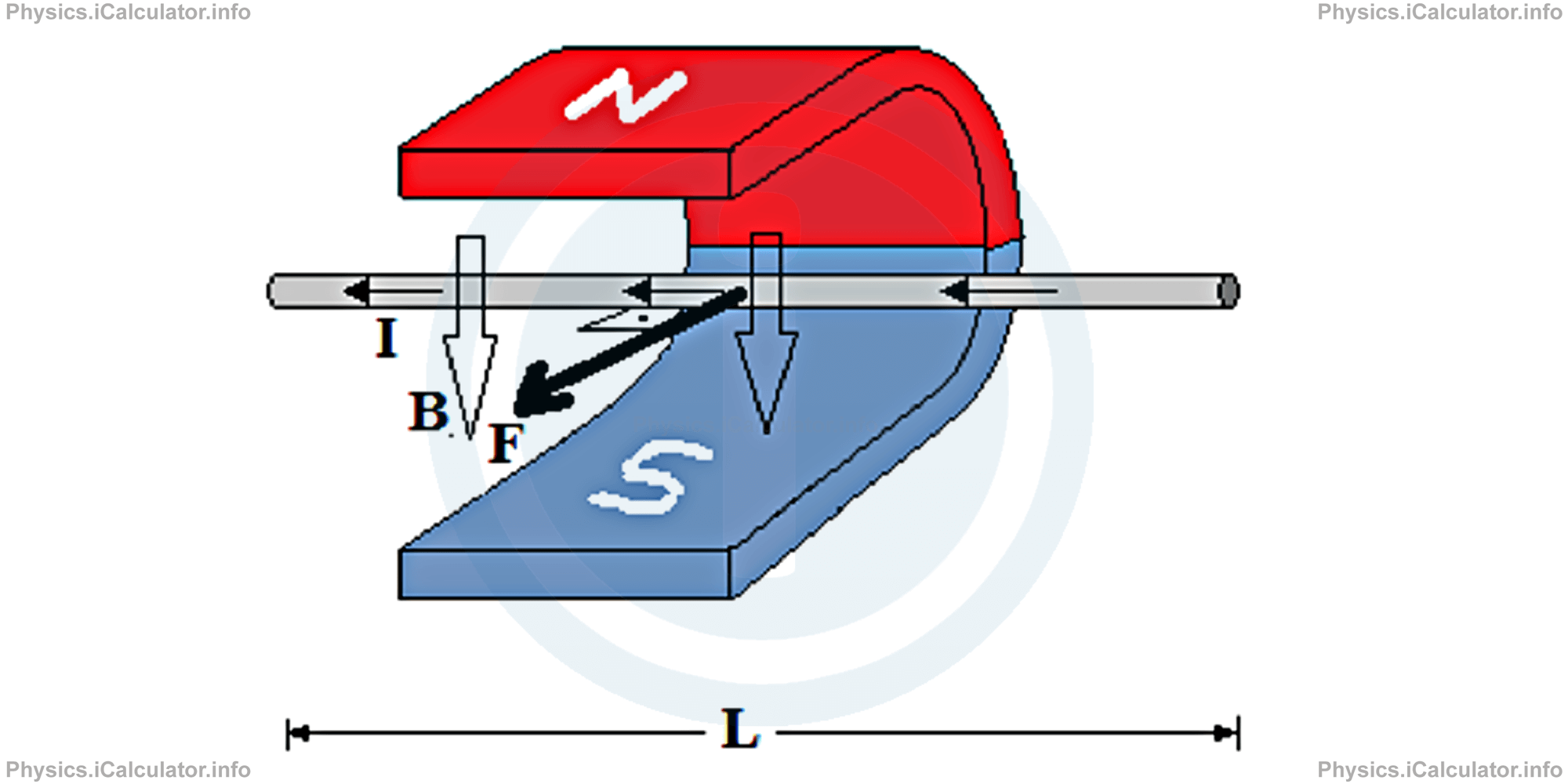
- The moving direction of wire is the same as that of magnetic force as all movements are caused by forces.
As for the magnitude of velocity, we use the equationF = Q ∙ v ∙ B ∙ sinθwhere F is the same magnetic force found at (a). It is equal to 0.04 N. On the other hand, the charge Q passing through the wire isQ = I ∙ tTherefore, the moving velocity of wire is
= (4A) ∙ (10s)
= 40 Cv = F/Q ∙ B ∙ sinθ
= 0.04 N/(40C) ∙ (0.05T) ∙ 1
= 0.02 m/s
= 2 cm/s
You have reached the end of Physics lesson 16.4.1 Magnetic Force on Moving Charges. There are 3 lessons in this physics tutorial covering Magnetic Force on a Wire Moving Inside a Magnetic Field. Lorentz Force, you can access all the lessons from this tutorial below.
More Magnetic Force on a Wire Moving Inside a Magnetic Field. Lorentz Force Lessons and Learning Resources
Whats next?
Enjoy the "Magnetic Force on Moving Charges" physics lesson? People who liked the "Magnetic Force on a Wire Moving Inside a Magnetic Field. Lorentz Force lesson found the following resources useful:
- Moving Charge Feedback. Helps other - Leave a rating for this moving charge (see below)
- Magnetism Physics tutorial: Magnetic Force on a Wire Moving Inside a Magnetic Field. Lorentz Force. Read the Magnetic Force on a Wire Moving Inside a Magnetic Field. Lorentz Force physics tutorial and build your physics knowledge of Magnetism
- Magnetism Revision Notes: Magnetic Force on a Wire Moving Inside a Magnetic Field. Lorentz Force. Print the notes so you can revise the key points covered in the physics tutorial for Magnetic Force on a Wire Moving Inside a Magnetic Field. Lorentz Force
- Magnetism Practice Questions: Magnetic Force on a Wire Moving Inside a Magnetic Field. Lorentz Force. Test and improve your knowledge of Magnetic Force on a Wire Moving Inside a Magnetic Field. Lorentz Force with example questins and answers
- Check your calculations for Magnetism questions with our excellent Magnetism calculators which contain full equations and calculations clearly displayed line by line. See the Magnetism Calculators by iCalculator™ below.
- Continuing learning magnetism - read our next physics tutorial: Magnetic Dipole Moment
Help others Learning Physics just like you
Please provide a rating, it takes seconds and helps us to keep this resource free for all to use
We hope you found this Physics lesson "Magnetic Force on a Wire Moving Inside a Magnetic Field. Lorentz Force" useful. If you did it would be great if you could spare the time to rate this physics lesson (simply click on the number of stars that match your assessment of this physics learning aide) and/or share on social media, this helps us identify popular tutorials and calculators and expand our free learning resources to support our users around the world have free access to expand their knowledge of physics and other disciplines.
Magnetism Calculators by iCalculator™
- Angular Frequency Of Oscillations In Rlc Circuit Calculator
- Calculating Magnetic Field Using The Amperes Law
- Capacitive Reactance Calculator
- Current In A Rl Circuit Calculator
- Displacement Current Calculator
- Electric Charge Stored In The Capacitor Of A Rlc Circuit In Damped Oscillations Calculator
- Electric Power In A Ac Circuit Calculator
- Energy Decay As A Function Of Time In Damped Oscillations Calculator
- Energy Density Of Magnetic Field Calculator
- Energy In A Lc Circuit Calculator
- Faradays Law Calculator
- Frequency Of Oscillations In A Lc Circuit Calculator
- Impedance Calculator
- Induced Emf As A Motional Emf Calculator
- Inductive Reactance Calculator
- Lorentz Force Calculator
- Magnetic Dipole Moment Calculator
- Magnetic Field At Centre Of A Current Carrying Loop Calculator
- Magnetic Field In Terms Of Electric Field Change Calculator
- Magnetic Field Inside A Long Stretched Current Carrying Wire Calculator
- Magnetic Field Inside A Solenoid Calculator
- Magnetic Field Inside A Toroid Calculator
- Magnetic Field Produced Around A Long Current Carrying Wire
- Magnetic Flux Calculator
- Magnetic Force Acting On A Moving Charge Inside A Uniform Magnetic Field Calculator
- Magnetic Force Between Two Parallel Current Carrying Wires Calculator
- Magnetic Potential Energy Stored In An Inductor Calculator
- Output Current In A Transformer Calculator
- Phase Constant In A Rlc Circuit Calculator
- Power Factor In A Rlc Circuit Calculator
- Power Induced On A Metal Bar Moving Inside A Magnetic Field Due To An Applied Force Calculator
- Radius Of Trajectory And Period Of A Charge Moving Inside A Uniform Magnetic Field Calculator
- Self Induced Emf Calculator
- Self Inductance Calculator
- Torque Produced By A Rectangular Coil Inside A Uniform Magnetic Field Calculator
- Work Done On A Magnetic Dipole Calculator